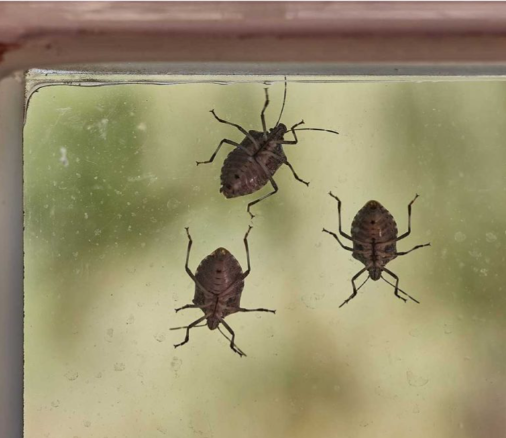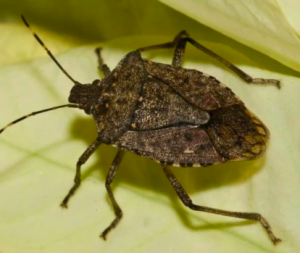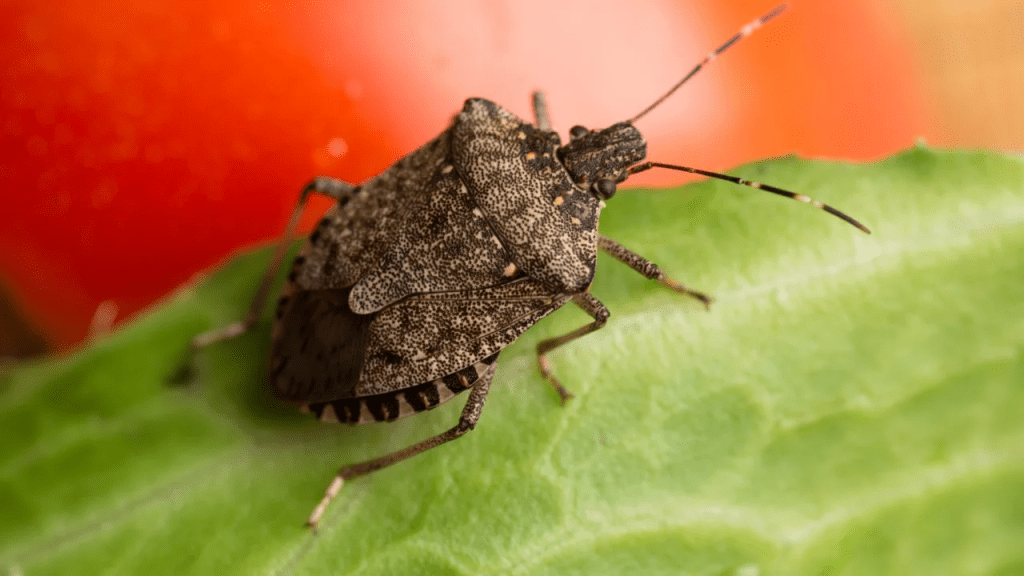As the days grow shorter and a cool breeze replaces the summer heat, many of us welcome the season’s change with open arms. However, not everyone is excited about this shift in weather. Along with our cozy sweaters and warm drinks, unwelcome visitors like stink bugs begin their search for shelter. These shield-shaped insects may be harmless to our health, but their presence can quickly turn a peaceful home into a battleground of unpleasant odors and frustration. In this guide, I’m sharing my top tips and tricks for keeping stink bugs out of your home, ensuring that your space remains comfortable and bug-free all season long.
Seal Entry Points: Locking Out the Uninvited

One of the most effective ways to keep stink bugs at bay is by blocking their entry into your home. These insects are experts at finding even the tiniest cracks, gaps, or holes that lead indoors. Start by giving your home a thorough inspection. Walk around the exterior, paying special attention to areas where utility pipes, cables, or wires enter your home. These spots are prime candidates for bug invasions.
- Inspection and Maintenance:
Begin by checking windows, doors, and the foundation for any signs of wear or gaps. Use a high-quality silicone or silicone-latex caulk to seal off these entry points. Not only does this help prevent stink bugs from sneaking inside, but it also improves your home’s energy efficiency—a win-win situation! - Focus on Windows and Doors:
Make sure weather stripping is installed around all exterior doors and windows. Adding door sweeps at the bottom of your doors can make a big difference. Additionally, inspect window screens for any tears or loose fittings. Repair or replace them as needed to create a solid barrier against unwanted intruders.
Video : How to keep stink bugs out of your home this winter
Install Screens and Vent Covers: A Barrier Against Bugs
Stink bugs are not only fond of sneaking in through cracks and gaps; they can also gain entry through vents and chimneys. To prevent these small pests from turning your vents into highways, consider installing fine mesh screens on all attic vents and chimney openings.
- Choosing the Right Screens:
Opt for screens with a fine mesh that can effectively block stink bugs and other tiny insects. The key here is ensuring the mesh is tight enough to keep even the smallest invaders at bay while still allowing proper ventilation for your home. - Secure Installation:
It’s not enough to just place a screen over a vent. Ensure that the screens are securely attached with no loose edges. This extra step ensures that no gaps are left for the stink bugs to exploit.
Minimize Outdoor Lighting: Dim the Bug Magnet
Did you know that stink bugs are attracted to lights? As fall approaches, many homes light up their outdoor spaces to extend the evenings and create a welcoming ambiance. However, this can inadvertently signal a buffet for stink bugs.
- Switch to Bug-Resistant Lighting:
Consider using yellow or sodium vapor lights for your outdoor areas. These types of lights are less attractive to insects, including stink bugs. They still provide ample illumination without acting as a beacon for bugs. - Control Your Lighting:
When stink bug activity peaks in late summer and early fall, try to minimize the use of outdoor lighting. Turning off unnecessary lights during the night can make a significant difference in reducing stink bug attraction.

Keep Your Home Clean and Decluttered: A Tidy Space is a Bug-Free Space
Stink bugs love to hide in cluttered and dark spaces. A clean and well-organized home makes it much harder for them to find the nooks and crannies they need to take refuge.
- Regular Cleaning Routine:
Make it a habit to vacuum and dust areas where stink bugs might hide, such as corners, under furniture, and along baseboards. Not only does this help remove any stray bugs, but it also keeps your home looking neat and inviting. - Declutter Your Storage Areas:
Areas like attics, basements, and garages can quickly become hotspots for stink bugs if they’re cluttered with old boxes and miscellaneous items. Switch from cardboard boxes to sealed plastic containers for storage. This simple change reduces hiding spots and prevents stink bugs from settling in.
Embrace Natural Repellents: Green Solutions for a Bug-Free Home
If you’re looking for a chemical-free way to deter stink bugs, natural repellents are your best bet. Essential oils have long been known for their insect-repelling properties, and several options work particularly well against stink bugs.
- Essential Oils at Work:
Oils like peppermint, neem, and eucalyptus have a strong scent that stink bugs find repulsive. Mix 10-15 drops of your chosen oil with water in a spray bottle, and apply it around potential entry points—doors, windows, and other vulnerable areas. - Herbal Deterrents:
Beyond essential oils, dried herbs such as mint or lavender can also serve as effective deterrents. Placing sachets near windows and doorways can help keep stink bugs from taking up residence in your home.
Video : Stink bug season: How to keep them out of your home
Deploy Traps: Catch and Remove the Intruders
Sometimes, despite all your preventative measures, stink bugs manage to find their way inside. When this happens, traps can be a lifesaver. Both commercial and DIY traps can help you capture and remove these pests before they cause a stink.
- DIY Trapping Methods:
One simple yet effective trap involves filling a shallow foil pan with water and adding a few drops of dish soap. Position a light source over the pan during the evening hours. The light attracts the stink bugs, and the soap breaks the water’s surface tension, causing the bugs to drown. - Commercial Traps:
If DIY isn’t your style, there are many commercially available stink bug traps on the market. Place these traps in areas where you’ve seen the most activity, and be sure to check and empty them regularly for best results.
Maintain Your Garden: Prevent Bugs from Migrating Indoors

Often, stink bugs make their way into your home from your garden. Keeping your outdoor space well-maintained not only promotes a beautiful landscape but also acts as a frontline defense against these pests.
- Garden Maintenance Tips:
Regularly remove weeds and trim overgrown vegetation where stink bugs can hide. A well-kept garden reduces the number of attractive hiding spots for these insects. - Outdoor Lighting Considerations:
Just as with your home, minimize the use of outdoor lighting in your garden during the peak stink bug season. By reducing bright lights near your house, you make it less likely that stink bugs will be lured indoors. - Harvest Promptly:
Ripe fruits and vegetables can attract stink bugs. Make sure to harvest your produce as soon as it’s ready to prevent creating a food source that could entice these bugs closer to your home.
When to Call in the Professionals: Tackling Severe Infestations
Despite your best efforts, there might come a time when stink bugs have taken over your space. In cases of severe infestation, it’s wise to seek the help of professional pest control services. These experts have the tools and expertise needed to address the problem more thoroughly and prevent future invasions.
- Understanding the Severity:
If you notice a persistent and widespread presence of stink bugs that home remedies and preventative measures cannot manage, it’s time to contact a professional. They can assess the situation and provide treatments that are both safe and effective. - Long-Term Solutions:
Professional pest control isn’t just about eliminating the current infestation. Experts can offer long-term strategies that ensure stink bugs—and other pests—don’t return. This might include regular inspections and specialized treatments tailored to your home’s unique needs.
Conclusion
As autumn approaches, preparing your home for the colder days isn’t just about getting ready for holiday gatherings or winter storms—it’s also about protecting your space from uninvited guests like stink bugs. By taking a few proactive steps, such as sealing entry points, installing screens and vent covers, minimizing outdoor lighting, and keeping your home clean and organized, you can significantly reduce the likelihood of a stink bug invasion. Natural repellents and traps provide additional layers of defense, while proper garden maintenance ensures that these pests are less likely to migrate indoors. And if all else fails, professional pest control services are always on hand to help reclaim your home.
By following these tried-and-true methods, you’ll not only keep your home stink bug-free but also create a safer, more comfortable living environment for you and your family. After all, a well-protected home is the cornerstone of a happy, stress-free life during the chilly fall and winter months. Enjoy the season without the worry of those pesky intruders—your cozy haven is now secure!


